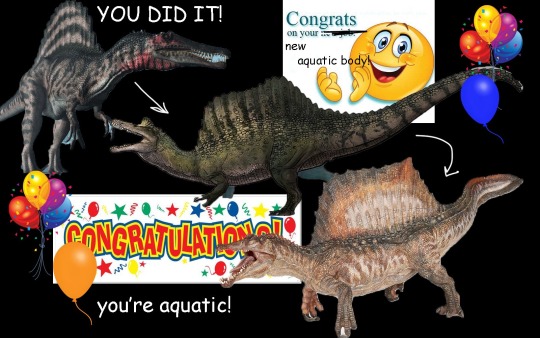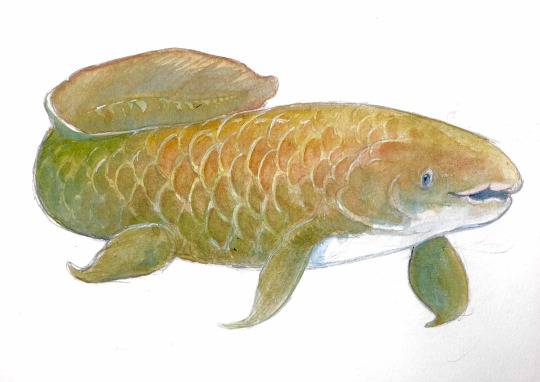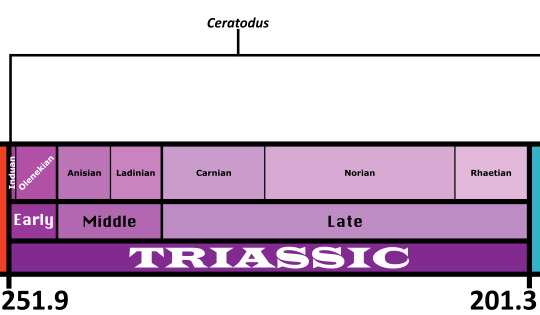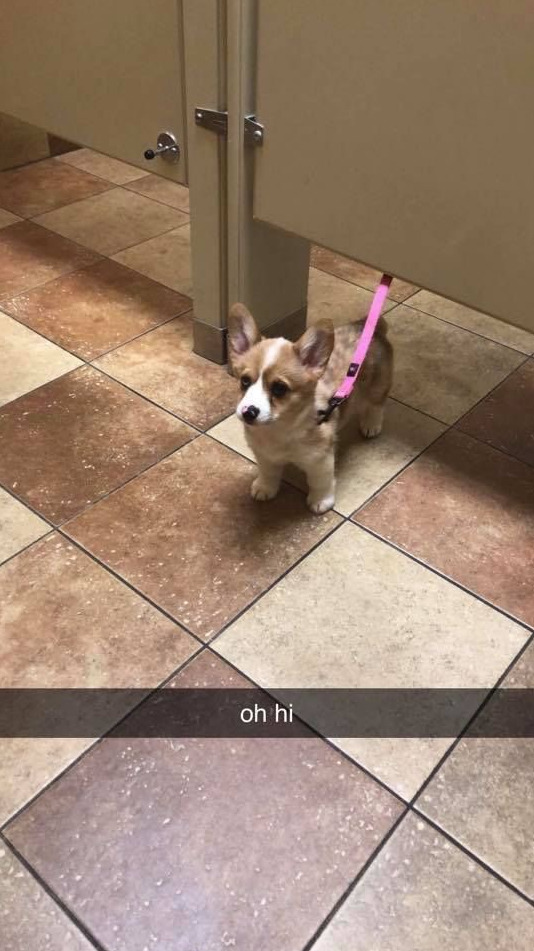The incoherent mumblings of a student in a modern world, with no talent or skill trying to make their way through the day. Welcome to the life of a geology student; expect there to be rocks and many puns.
Don't wanna be here? Send us removal request.
Photo

Retro vs Modern #09: Hallucigenia sparsa
If just one single species had to represent how our reconstructions of prehistoric animals can drastically change, it would have to be Hallucigenia sparsa.
1970s
First discovered in the 1910s in the Canadian Burgess Shale fossil deposits, specimens of Hallucigenia were initially categorized as being a species of the early polychaete worm Canadia. It wasn’t until the 1970s that they were recognized as being something else entirely, and the first reconstruction of this tiny animal was bizarre.
It was depicted as a long-bodied creature with a single row of tentacles along its back, and several pairs of long sharp spines that were interpreted as being stilt-like “legs” used to walk. The tentacles were thought to catch food from the water and pass it forwards to the bulbous “head” – and at one point it was even proposed that all the tentacles had their own additional “mouths” at their tips!
It’s easy to look back on this version now and laugh at how ridiculous and obviously wrong it was, but it’s important to remember the historical context here. This was coming from a point when the incredible animal diversity of the Cambrian Explosion was only just starting to be understood, revealing a range of poorly-understood bizarre and alien-looking forms like Opabinia – “weird wonders” that were considered to be representatives of previously unknown ancient branches of life.
At the time, Hallucigenia’s utter weirdness and impractical body plan seemed to almost make sense as a unique evolutionary “failed experiment” that had left no living relatives.
1990s
Discoveries of legged-and-armored lobopodian “worms” in the Chinese Chengjiang fossil deposits during the 1980s prompted a re-interpretation of Hallucigenia in the early 1990s. Speculatively reconstructing it as a lobopodian with the spines on its back and with the tentacles as a set of paired clawed legs started to make it seem a lot less alien and a lot more like a real velvet-worm-like animal – and just a year later the “missing” other half of the leg pairs was confirmed to be present in some of the fossil specimens.
But it was still unclear which end was actually the head, and whether the large blob-like structure was a real part of Hallucigenia’s anatomy or just an artifact of the fossilization process.
2020s
New research in the mid-2010s finally settled the head problem and clarified a lot of Hallugicenia’s anatomy, discovering that the slender elongated end had a pair of simple eyes and a mouth with a throat ringed with tiny teeth.
We now know Hallucigenia sparsa lived all around the world during the mid-Cambrian, about 518-508 million years ago, with body fossils known from Canada and China and isolated spines found in numerous other similarly-aged locations. Instead of an evolutionary dead-end “weird wonder” it was actually an early member of the vast arthropod lineage, just one of a highly diverse collection of successful Cambrian lobopodians, and its closest living relatives are probably velvet worms and tardigrades.
It grew up to about 5cm long (2") and had seven pairs of long sharp defensive spines along its back, covered with a microscopic surface texture of tiny triangular “scales”. It had seven pairs of clawed walking legs, with most of its feet tipped with two claws each but the final two pairs having just one, and its body ended right at the final pair of limbs – the “blob” structure in some fossils was actually just an artifact the whole time, formed by Halligenia’s innards being forcefully squeezed out during its burial in the seafloor sediment.
Its neck region bore three pairs of long delicate tendril-like limbs, which may have been covered in feathery hair-like structures for filter-feeding similar to some other lobopodians. A small pair of velvet-worm-like antennae may also have been present on its head, and could have been a sexually dimorphic feature.
———
Nix Illustration | Tumblr | Twitter | Patreon
2K notes
·
View notes
Text


Looking at them side-by-side, Peytoia just looks like a poorly drawn Anomalocaris. I love her...
13K notes
·
View notes
Photo

Retro vs Modern #06: Plesiosaurus dolichodeirus
Plesiosaurs were first recognized as a distinct group of fossil animals in the early 1820s, only a few years after ichthyosaurs. Initially they were perceived as being closer in form to reptiles in the “chain of being” than the more fish-like ichthyosaurs were, and so the group’s scientific name ended up reflecting that early interpretation – “plesiosaur” roughly translates to “near to reptiles”.
The first named species of plesiosaur was Plesiosaurus dolichodeirus, based on a near-complete skeleton discovered by Mary Anning that revealed the strange long-necked proportions of these animals for the first time.
1830s-1850s
Early reconstructions of plesiosaurs in the 1830s compared them to “a snake threaded through a turtle”, giving them highly sinuous necks and a turtle-like body. Much like ichthyosaurs they were assumed to be amphibious, using their flippers to crawl up onto the shore like a sea turtle.
The 1850s Crystal Palace plesiosaur statues show a variant of this design with smooth skin textures and fairly flexible reptilian bodies, with powerful shoulders and flipper postures that give them an overall almost seal-like appearance.
1860s-1990s
From the 1860s onwards a more upright S-shaped neck pose became the most common depiction of plesiosaurs. The writhing snake-like necks persisted in some reconstructions of the extremely long-necked elasmosaurids, but the overall design for these animals that caught hold for the next century was an egg-shaped body with oar-like flippers and a swan-like neck – a body plan that would end up so influential in pop culture that it was incorporated into modern lake monster folklore, with the Loch Ness Monster being the most famous example.
During this period plesiosaurs were often portrayed as floating or swimming at the water’s surface, rowing along with their flippers and using their long necks to snatch up prey. They were generally assumed to still haul out turtle-style to lay their eggs on the shore, although it wasn’t clear how the very largest species would have been able to support their own weight.
2020s
Since the 1990s a boom of new plesiosaur species and biomechanical studies have brought a lot of changes to our understanding of these marine reptiles.
Their necks are now considered to have been less flexible, capable only of more gentle curving, and were probably much thicker and more streamlined with the body than previously depicted. Rather than oar-like rowing all four of their flippers were probably used in more of an “underwater flying” vertical motion similar to modern sea turtles – which is pretty fitting, considering that their closest living relatives are now thought to actually be turtles.
They gave live birth and were probably warm-blooded, with a thick layer of insulating blubbery fat and a teardrop-shaped body outline. Their skin texture was smooth, but one exceptionally well-preserved specimen shows a covering of tiny thin millimeter-sized scales that wouldn’t have been visible in life except in extreme closeup.
We now know Plesiosaurus itself was a fairly small species, around 3.5m long (~11'6"), with a broad body and a short thick tail that probably had a rudder-like fin – usually assumed to be vertically-oriented, but possibly horizontal instead. It lived during the Early Jurassic, about 201-183 million years ago, in the shallow tropical sea that covered what is now southern England, and had a rather small head compared to other plesiosaurs, with its eyes facing upwards and to the sides.
It had sharp needle-like teeth that would have been used to catch soft-bodied aquatic prey like fish and cephalopods. It’s not known whether it had extensive fleshy lips, croc-like snaggletoothed jaws, or something in-between, so the facial soft tissue on this particular reconstruction is rather speculative.
———
Nix Illustration | Tumblr | Twitter | Patreon
3K notes
·
View notes
Text
it’s nearly midnight and im getting very emotional about spinosaurus i need to go to sleep
7K notes
·
View notes
Text

Spinosaurus anatomy circa 2043
122 notes
·
View notes
Text

heard about the spinosaurus news today! congrats!
33K notes
·
View notes
Text
A GIANT BOX JUST SHOWED UP ON MY PORCH I WONDER WHAT IT IS
5K notes
·
View notes
Text
Fun fact: the guys at our college’s geology department prop out the doors with their samples. I totally understand why but as someone whose work with samples is necessarily super delicate and sterile it fucks me up so bad
144K notes
·
View notes
Text






I work at a science museum and I need everyone to appreciate these Paleozoic plushies we sell in the gift shop.
6K notes
·
View notes
Note
What are your favorite (purely aesthetically) outdated Dino depictions? I’m partial to the D-shaped heads of the old Deinonychus, and the flexible Leaping Laelaps
I like sauropods always doing this pose

and chunky Ankylosaurus


2K notes
·
View notes
Text
Ceratodus

By Ripley Cook
Etymology: Horn tooth
First Described By: Agassiz, 1837
Classification: Biota, Archaea, Proteoarchaeota, Asgardarchaeota, Eukaryota, Neokaryota, Scotokaryota, Opimoda, Podiata, Amorphea, Obazoa, Opisthokonta, Holozoa, Filozoa, Choanozoa, Animalia, Eumetazoa, Parahoxozoa, Bilateria, Nephrozoa, Deuterostomia, Chordata, Olfactores, Vertebrata, Craniata, Gnathostomata, Eugnathostomata, Osteichthyes, Sarcopterygii, Rhipidistia, Dipnoi, Ceratodontiformes, Ceratodontidae
Referred Species: C. africanus, C. carteri, C. diutinus, C. elegans, C. eruciferus, C. felchi, C. fossanovum, C frazieri, C. guentheri, C. gustasoni, C. hierogyphus, C. humei, C. kempae, C. kranzi, C. latissimus, C. molossus, C. nirumbee, C. robustus, C. stewarti, C. szechuanensis, C. texanus, C. tunuensis
Status: Extinct
Time and Place: 252 to 55 million years ago, from the Induan of the Early Triassic to the Ypresian of the Eocene.

Ceratodus is known from the United States, Peru, Uruguay, Greenland, Svalbard, South Africa, Madagascar, Morocco, Libya, Mali, Niger, Egypt, Sudan, Saudi Arabia, France, Spain, Switzerland, Liechtenstein, Germany, England, Russia, India, Mongolia, Thailand, and Australia.

Physical Description: Ceratodus is… a lungfish. Most of the fossil remains are distinctively-shaped teeth. These teeth are multicusped and in life would be incorporated into a solid crushing surface with other tissues in the mouth. Externally it would have looked very much like the Queensland lungfish. In fact, it used to be considered a species of Ceratodus, until it was moved to the genus Neoceratodus in 1977. Ceratodontiform morphology has changed little in the intervening time. Look at a lungfish and you know what Ceratodus was like.
Diet: Ceratodus would have eaten fish, small amphibians, a variety of invertebrates, and possibly plant matter, much like its living relative.
Behavior: Ceratodus is probably best compared to a fallen log. It would have sat quietly at the bottom of calm waters, waiting for food to come on by. It was likely primarily nocturnal, and more mobile at night. As a lungfish, it would have been able to breathe air, and thus would be able to survive its habitat drying up. Going off its modern relatives, it may have been able to live for absurdly long periods of time if left alone - captive Queensland lungfish can and have reached their 90’s.
Ecosystem: Ceratodus fossils are known from pretty much everywhere. In the Triassic, Ceratodus is known from North America, Europe, western Asia, India, and Australia. Most Ceratodus-bearing habitats were marshlands or other calm freshwater environments. Other Ceratodus-bearing sites are marine, meaning the Ceratodus found there were probably washed out to sea. The seasonal wetlands Ceratodus probably favored were also frequented by sharks such as Hybodus and xenacanthids, ray-finned fish, temnospondyls, and phytosaurs. The exact species vary by location; in North America, Ceratodus lived alongside phytosaurs like Rutiodon and Smilosuchus, while in Eurasia temnospondyls such as Metoposaurus and Cyclotosaurus were more common. Of course, many land-living animals would have come by these rivers to drink, such as cynodonts, rhynchosaurs, pseudosuchians, and early dinosaurs. To go more in-depth would make this article three times as large as it currently is.
Other: There’s a town in Queensland called Ceratodus.
~ By Henry Thomas
Sources under the Cut
Keep reading
236 notes
·
View notes
Note
Please consider: reverse manticores
ok but, this isnt a mermaid kinda deal, where you can just flip two bits and be done with it. a manticore has PARTS
theres a lot of other interpretations of em out there, but for simplicity lets say theres four defining Big Features to work with that i can swap around

first up, the back bit (scorpion tail) and front bit (human face) are switched, giving us a scorpion face. if we were being really accurate the scorpions entire head actually consists of a lot more legs, but were not, so it doesnt

then instead of a lion body, its a bat body, swapping with the wings and giving us, incredibly, another fucking pair of bat wings

this would be the bit where the human tail goes in but guess what

and then I GUESS instead of bat wings, the reverse scorpion would have LION WINGS !! but theres no such thing so we gotta go with the closest equivalent, which is just a big ol goddamn pair of lion arms

oh yeah. oh FUCK yeah. the a n t i c o r e

60K notes
·
View notes



